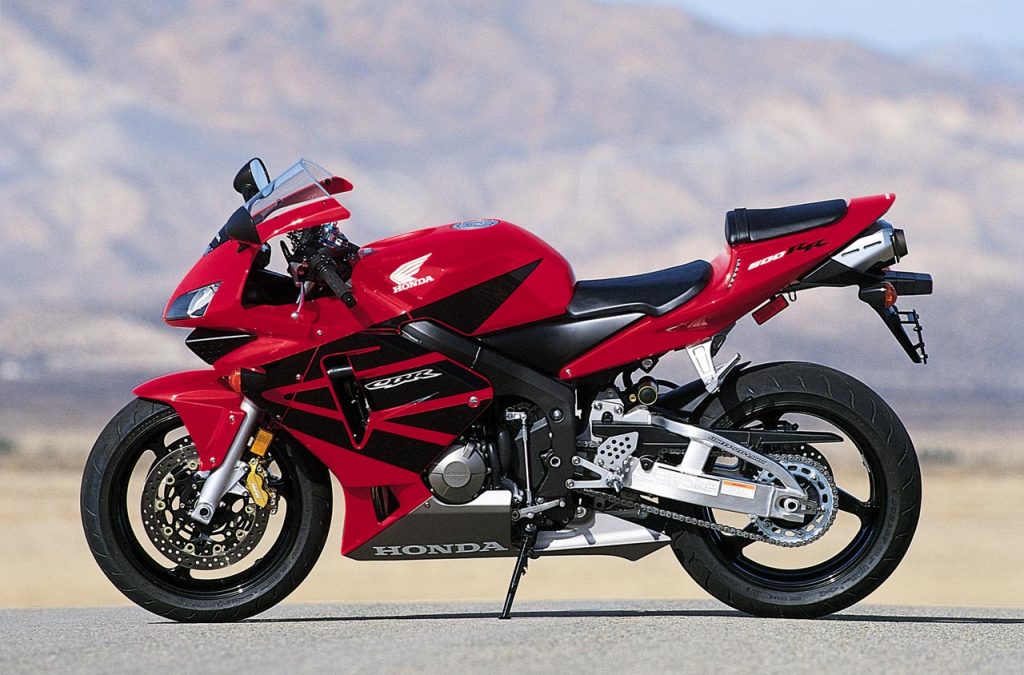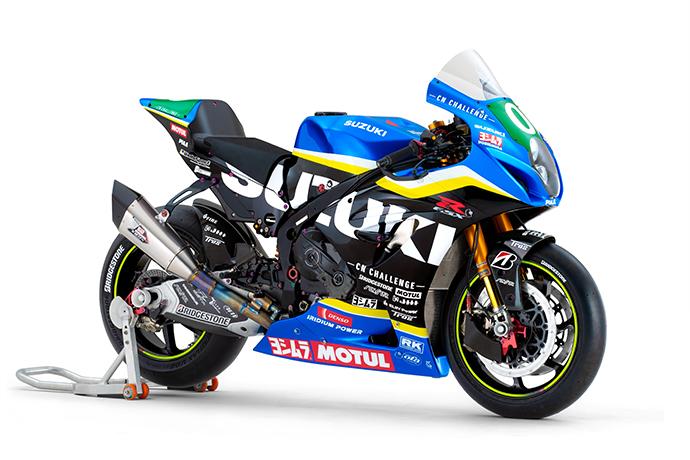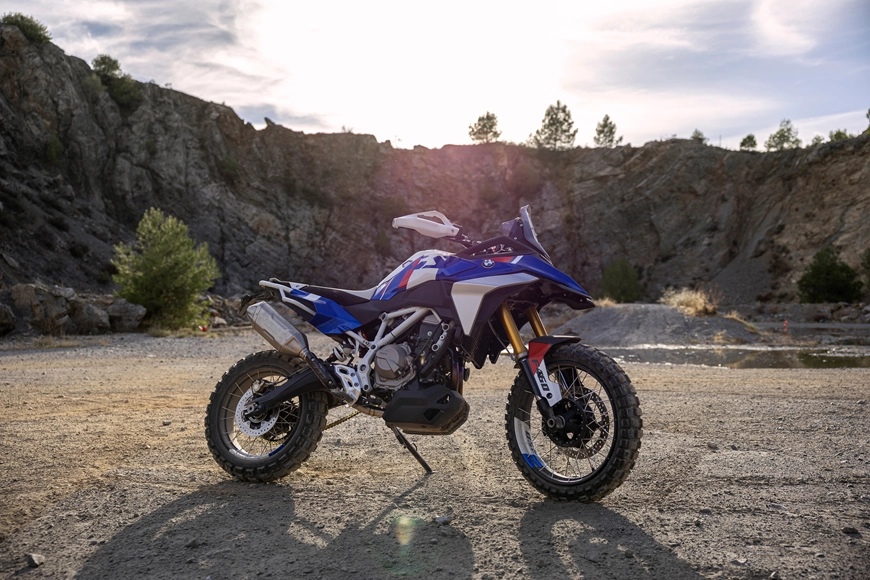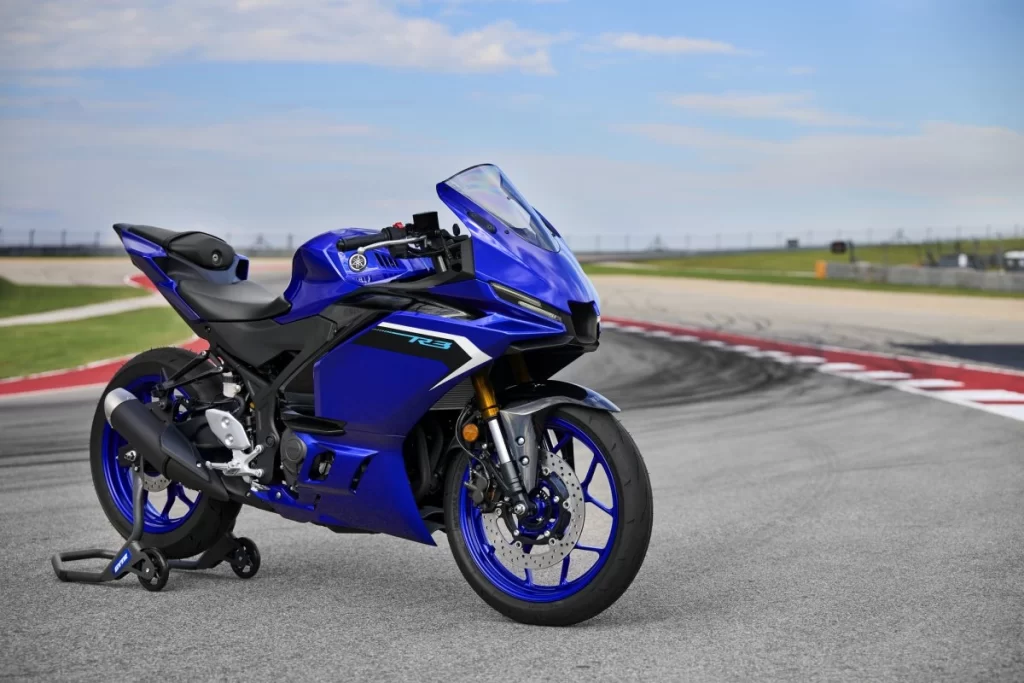-
The Honda Motor Company, Ltd. has produced some revolutionary models since their inception in 1959.
-
Their bikes illustrate their “Power of Dreams” principle.
-
These are only ten but there are really (too) many more.
As the world’s largest motorcycle manufacturer, the Honda Motor Company, Ltd. has produced some revolutionary models since their inception in 1959. Operating behind the “Power of Dreams” principle, some of these motorcycles, their technologies, innovations and ideas went to influence how the industry approaches motorcycles.
Here are ten best production motorcycles. They are picked due to their groundbreaking ideas and not necessarily their sales figures.
10. NR (1992)
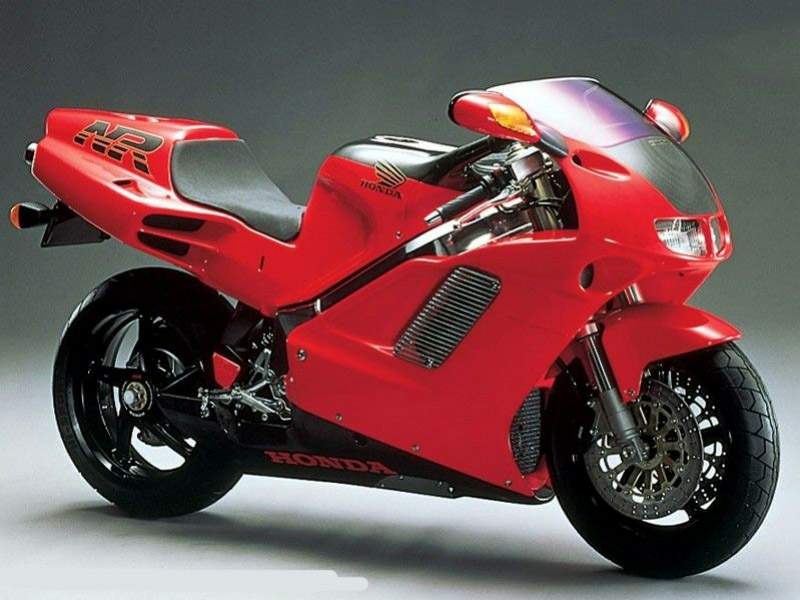
Honda is a “four-stroke” company, first and foremost. Although the had dominated the 500cc two-stroke GP championship for many years, they still believed the benefits of the four-stroke engine.
Honda had to think outside the box to compete against the two-strokes, which led to the developing of the four-stroke 500cc NR500 GP racer. It featured oval pistons to increase the cylinder’s swept area and each piston had two conrods. Each cylinder was serviced by 8 valves! The four oval pistons were fitted into a V-Four configuration, but it was actually more like a V-Eight.
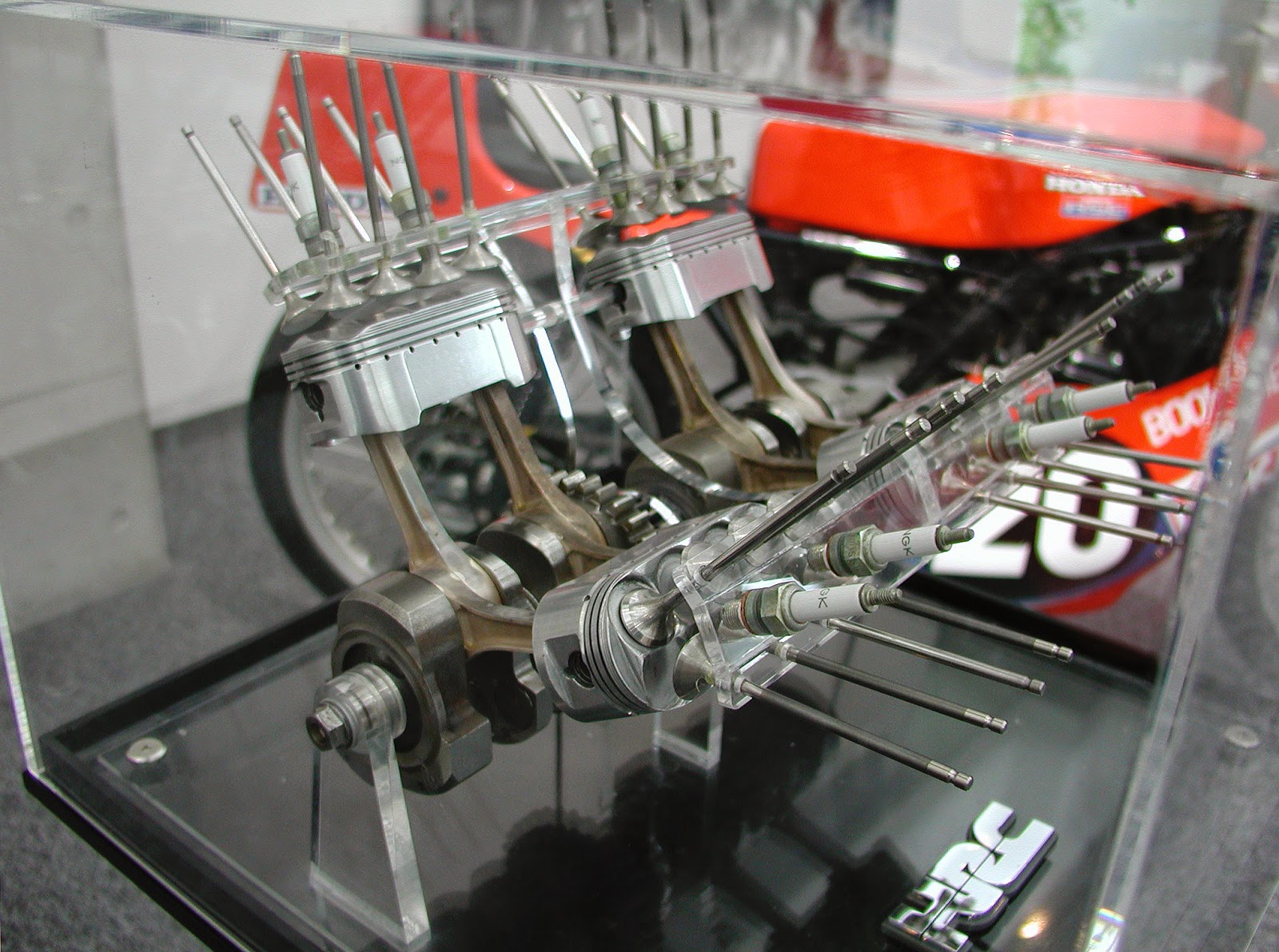
This technology was brought to the buying public in the form of the 750cc NR superbike. Apart from the oval pistons, the bike had underseat exhausts and a single-sided swingarm. These two designs were later adopted by Massimo Tamburini into the groundbreaking Ducati 916.
Sadly, the bike was way too expensive and had problems. Only 300 were built but collectors do seek them out.
9. VFR750R (RC30) (1987 to 1990)
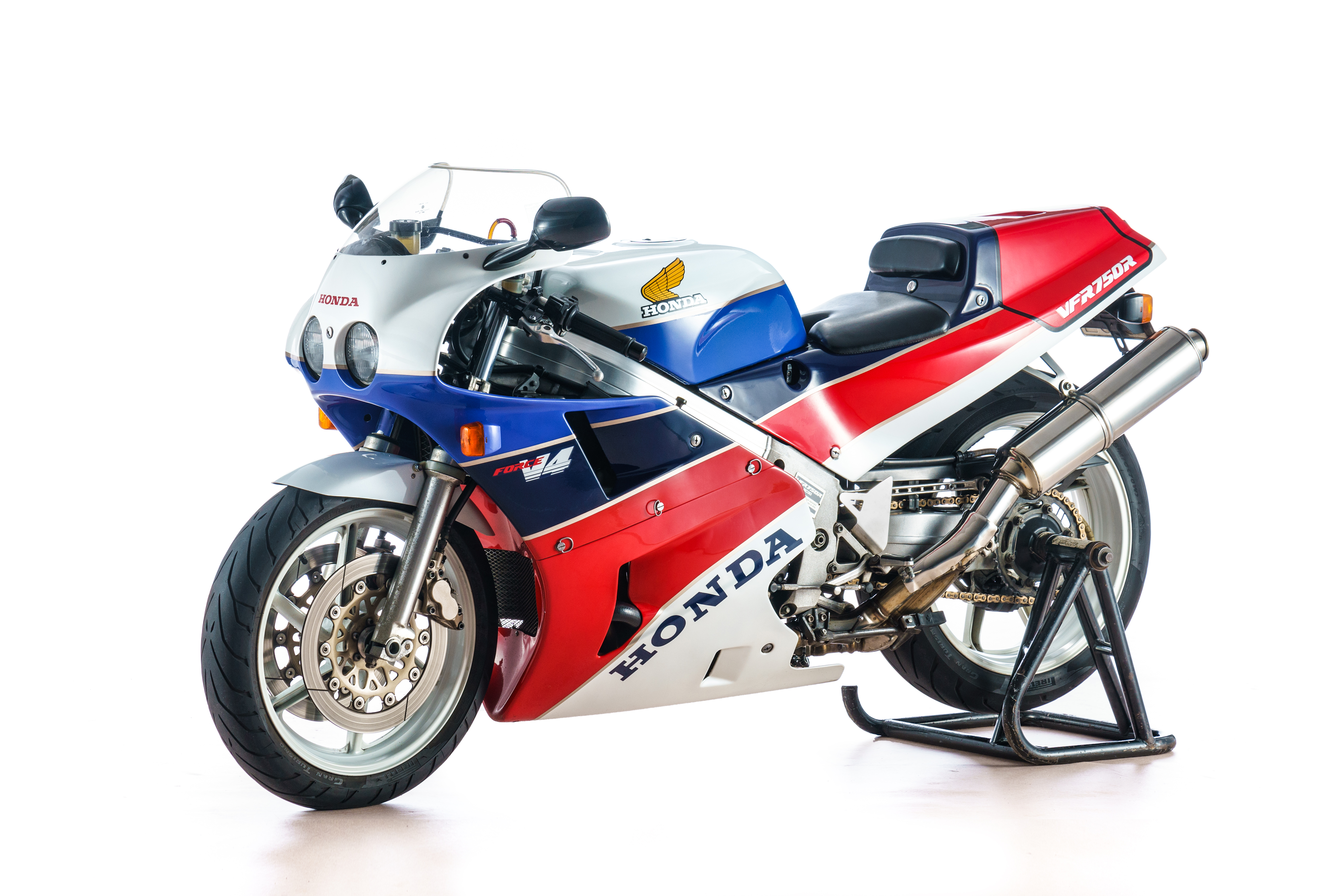
The FIM had shut down Formula TT to make way for the first Superbike World Championship (WSBK) in 1988. As it was a production-based championship, manufacturers must homologate the bike they wished to race in the series. Besides that, most parts and components of the of the race bike must be the same as those on the homologated bike. Honda was quick on the ball and built the VFR750R, model code RC30.
It was made to win from the start, featuring 748ccc V-Four engine (four-cylinder engines were limited to 750cc back then), with gear-driven cams. It produced 118 hp, which was really high at the time. That wasn’t all, the engine and entire bike was full of race-ready components. For example, the piston connecting rods were made of titanium, making the RC30 the first road bike to use such component. The first gear was geared “long,” which allowed it to hit 132 km/h. There was a slipper clutch to eliminate locking up the rear wheel under aggressive downshifting.
Its aluminium spar frame appeared just one year after Suzuki debut it on a road bike on the GSX-R750. And just like the Suzuki, Honda had adopted it from the NSR500 GP racer, along with the dimensions of the bike.
It was clear that Honda earmarked the bike to enter endurance racing, as well, especially at the prestigious Suzuka 8-Hour. Hence, the bottom of the forks had quick release nuts to allow the front wheel and axle to drop free for quick wheel changes. Similarly, the rear wheel was carried on a single-sided swingarm where the sprocket and brake were mounted, while the wheel was held in place by a single lug nut.
American rider Fred Merkel took the RC30 to the inaugural World Superbike title in 1988. He followed up his success the next year.
He was not the only one to taste success. Any RC30 rider around the world owned the competition, including Robert Dunlop and Steve Hislop at the 1989 and 1990 Macau Grands Prix.
Only 3,000 VFR750R RC30 were ever built and it is still very much sought after.
8. RVF750 (RC45) (1994 to 1995)
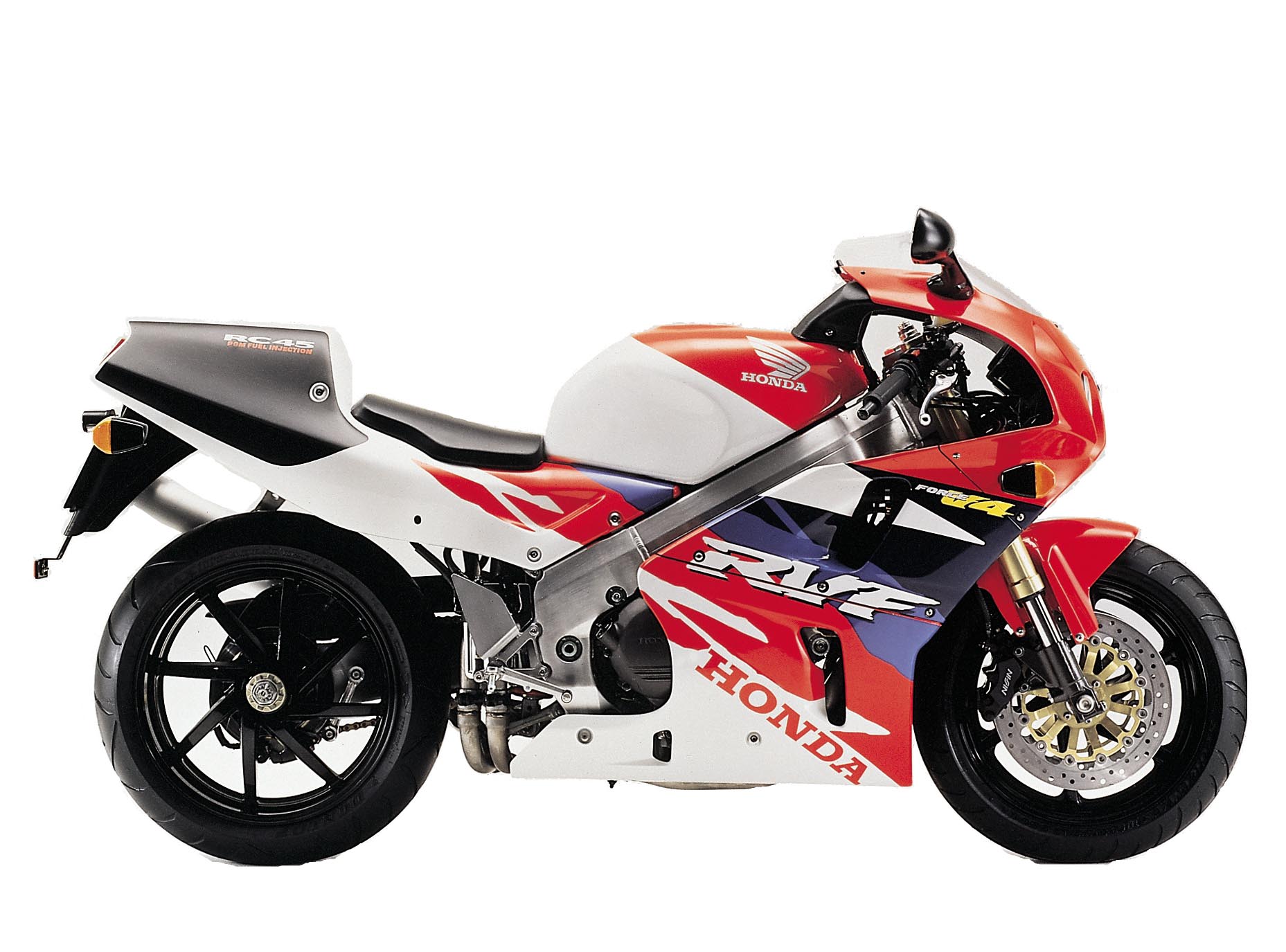
The VFR750R RC30 had started showing its age by 1992, having being beaten soundly by the Ducati V-Twins, despite the latter’s lower horsepower. Kawasaki had also defeated Honda and Ducati for the 1993 title.
If there is one manufacturer that absolutely hates getting beaten, it is Honda, regardless of motorsport. Thus, they stepped up the game by having the Honda Racing Corporation (HRC) build a new no-expense spared bike to wrest the title back. This resulted in the RVF750 (RC45) in 1994.
It was still a 750cc V-Four but with many differences over the RC30. It had PGM-FI fuel injection, titanium conrods, lightweight and low-friction pistons, ceramic and graphite coated bores, engine parts cast from magnesium, and much more.
While the roadgoing version officially produced 118 hp (the same as the RC30), its strength was in the configurable PGM-FI fuel injection system. It came to produce an “official” 190 hp in its last years in racing form, although some claimed that it actually produced more power than Honda’s all-conquering NSR500 two-stroke GP racer (as in above 200 hp).
Honda had wanted to squash the competition in World Superbikes, but it did not happen until 1997 when John Kocinski joined the team. However, the RC45 was an invincible beast that no one could beat in other championships and races, including in the AMA Superbikes and Isle of Man TT. It also won the FIM Endurance World Championship six times.
Only 200 were made for the road, each one hand built. It’s one of the rarest production Hondas.
7. CBR600F and CBR600RR (1987 to 2007)
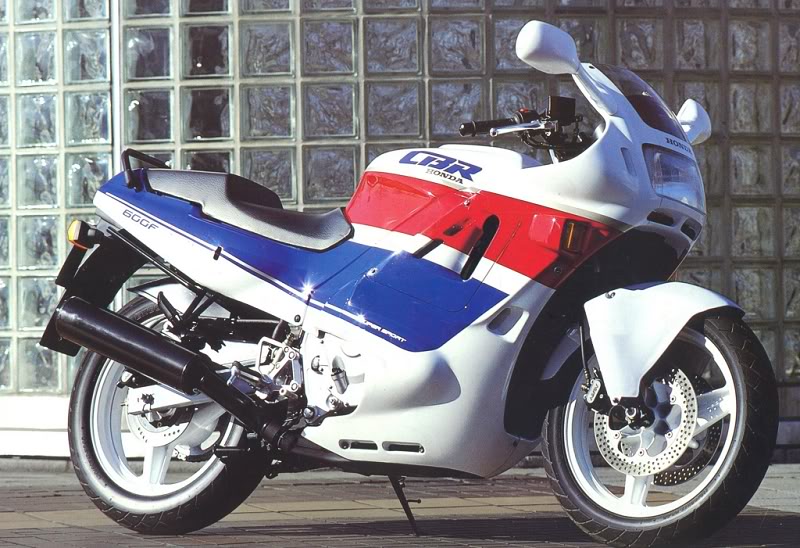
The CBR600F made its debut in 1987. It was Honda’s first fully-faired inline-Four bike along with the CBR750F and CBR1000F.
Although the CBR600 and its subsequent iterations appeared sporty, and were entered into competition, it distinguished itself as the everyday supersport bike. Riders loved it for its torque and midrange horsepower, but most of all, it was comfortable for street riding and sporty enough for track work. Hence, its lineage continued until the CBR600F4i which stopped production in 2006.
Honda released the sportier CBR600RR in 2003 as the contender for the supersport titles and production continued until 2007.
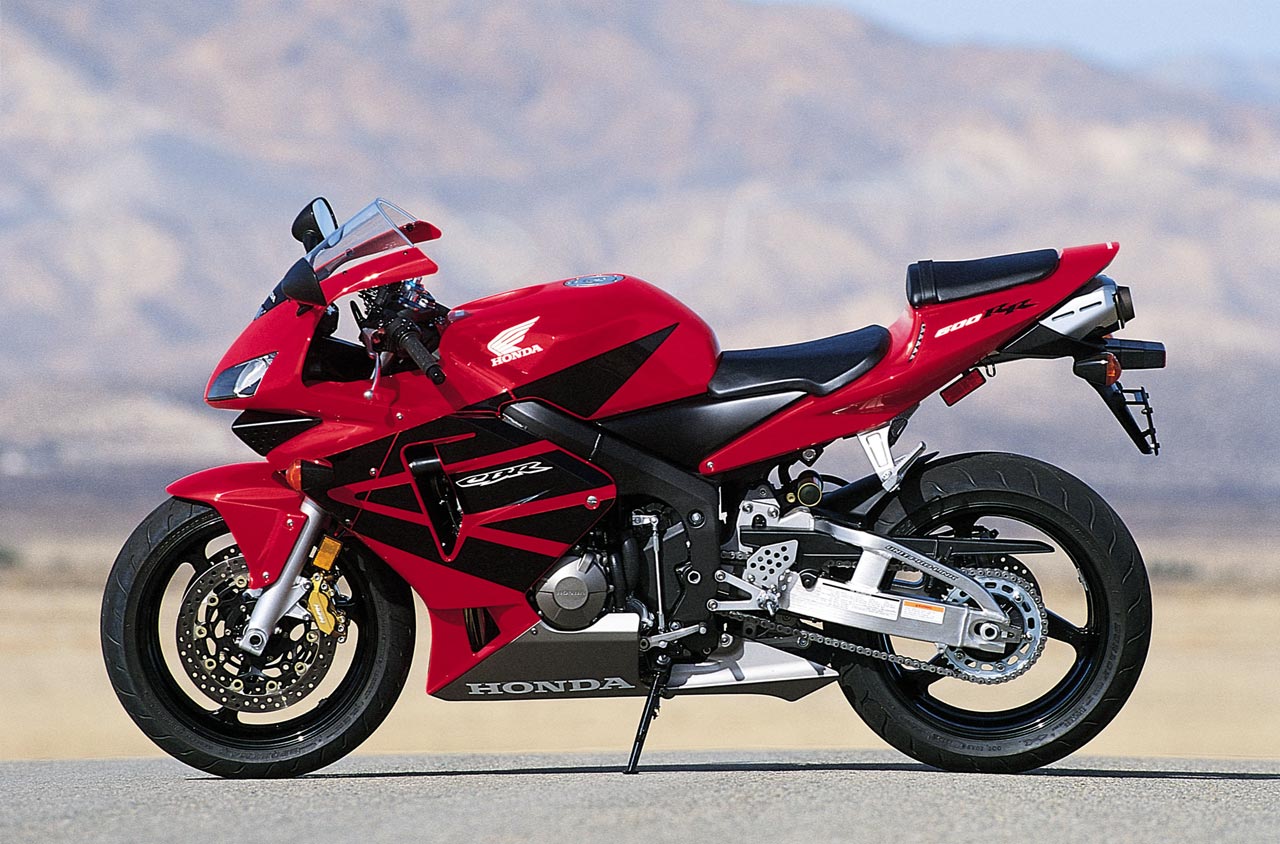
The current CBR650 continues the CBR600F and CBR600RR’s heritage but the engine was adopted from the naked Hornet.
6. Gold Wing (1975 to current)
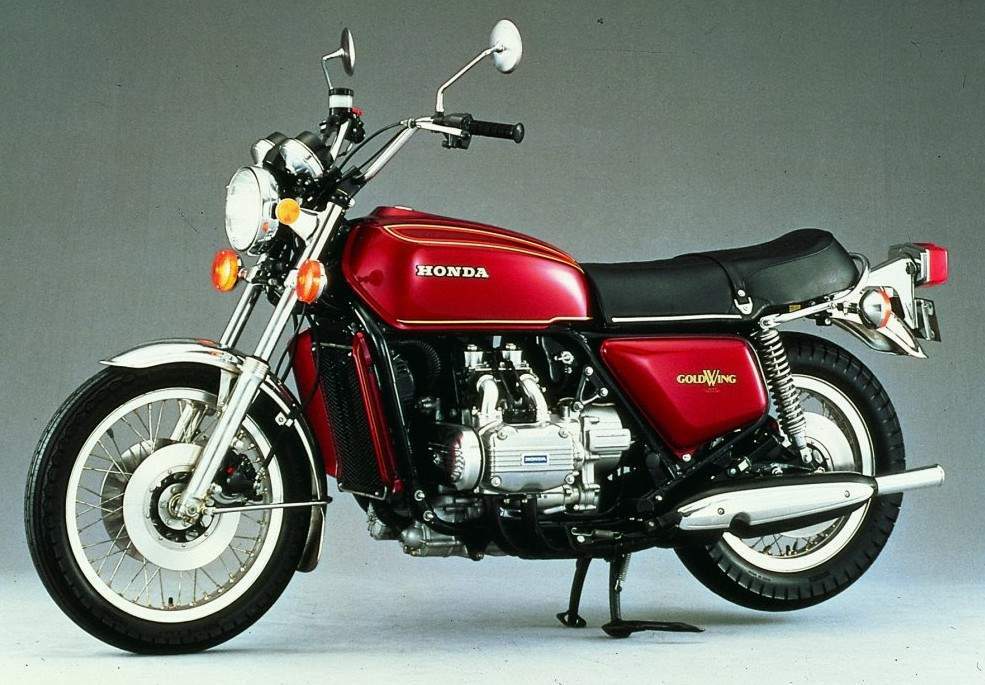
There is no other leader in the luxury touring segment than the Honda Gold Wing. BMW had come very close to snatching the title with the K 1600 line-up, but Honda had simply moved the goal posts even further away.
The Gold Wing began as the Gold Wing GL1000 in 1975 (introduced in the Cologne Motor Show in 1974). It featured a 999cc, SOHC, flat-Four and shaft final drive. Although meant as a sport-tourer, it did not have factory fitted windshield or luggage. But the American market loved it and Honda sold 13,000 units in that one year alone.
The Gold Wing grew through the years and the “full-dress” touring bodywork was offered in the GL1100 Insterstate option in 1980.
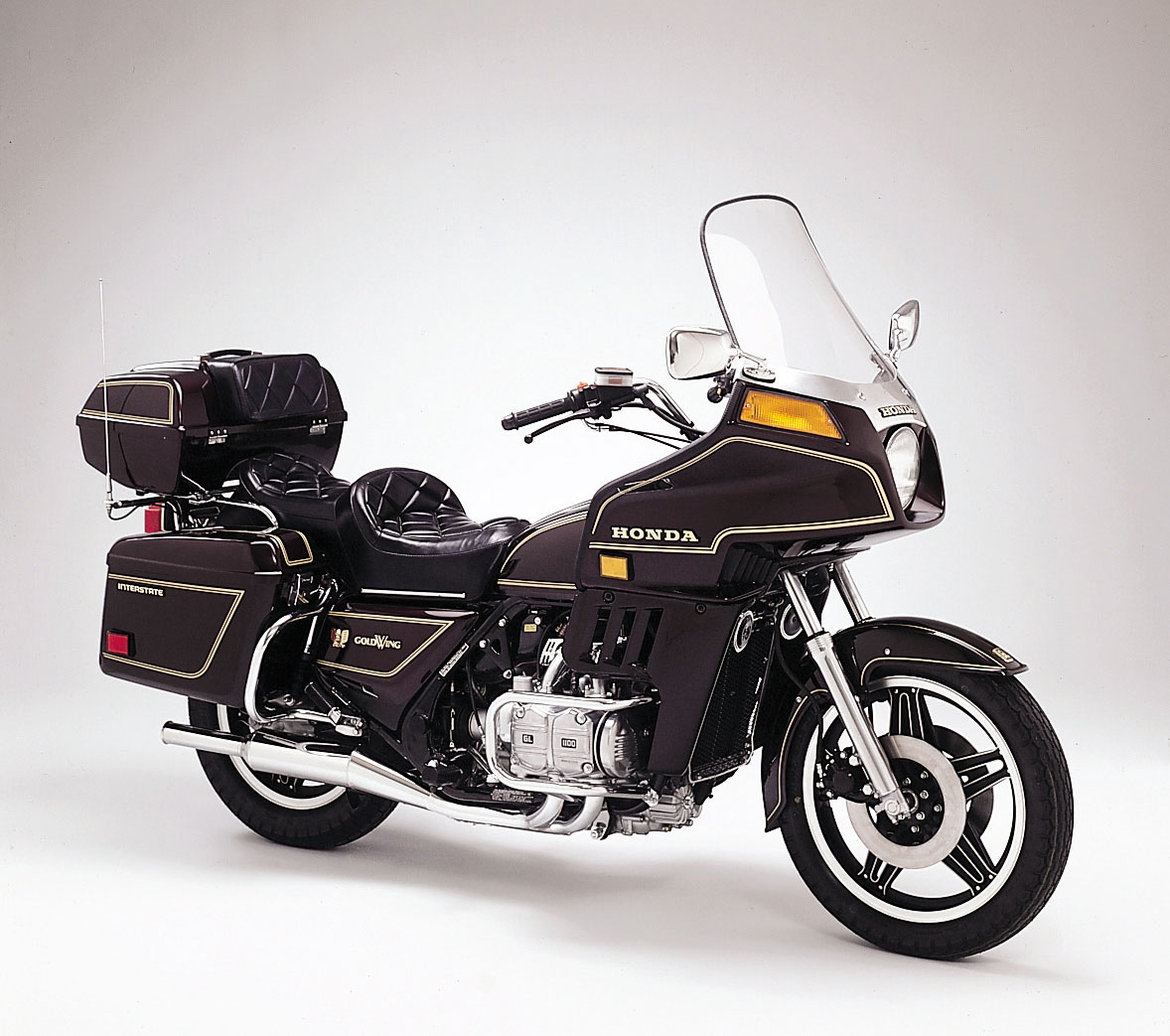
Its engine capacity grew bigger and bigger due to close competition from other Japanese rivals such as Yamaha and Kawasaki. Finally, the fourth generation Gold Wing was introduced in 1987 (for model year 1988) along with a 1500cc engine and its now signature 6-horizontally-opposed (flat-Six) engine.
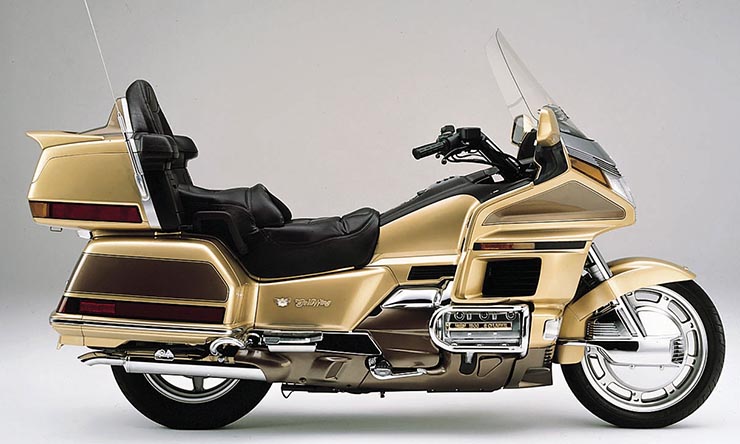
The fifth generation made its debut in 2001 with an 1800cc engine, which is the capacity through to the current sixth generation model which was introduced in 2018.
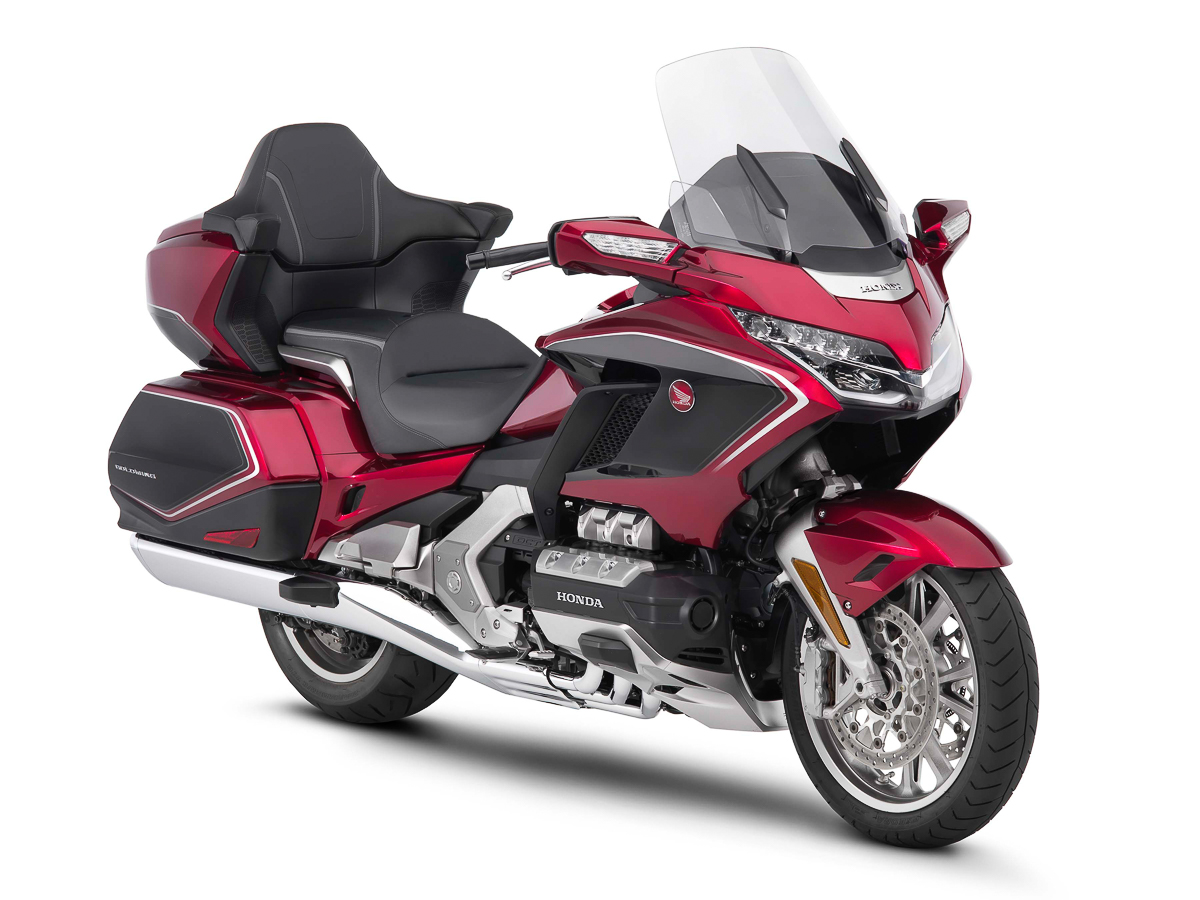
The Gold Wing has so many onboard luxury options that rivals cars, including an airbag, so much so that some joke that it’s actually hiding two extra wheels underneath. It may be true (just joking), given how easy it is to ride the bike.



